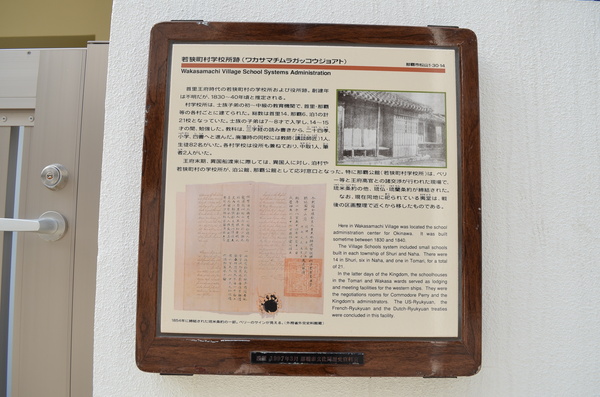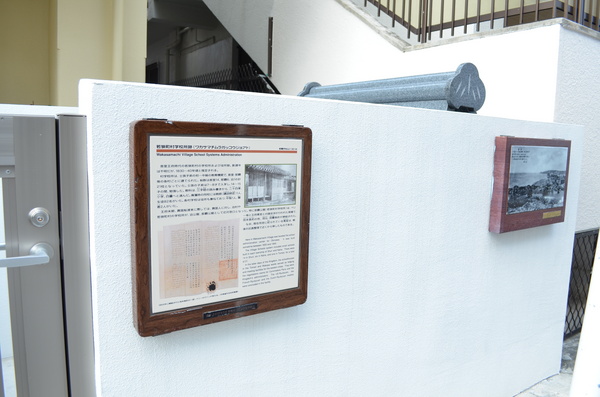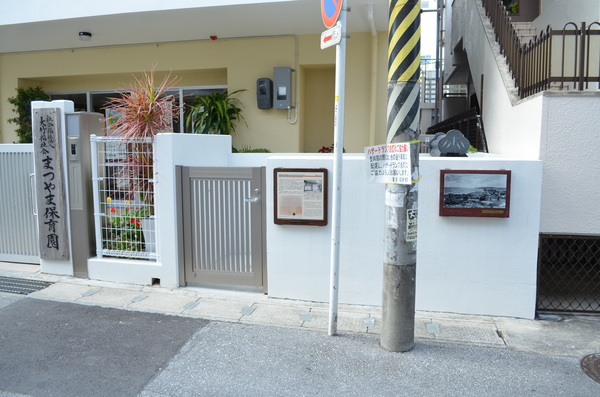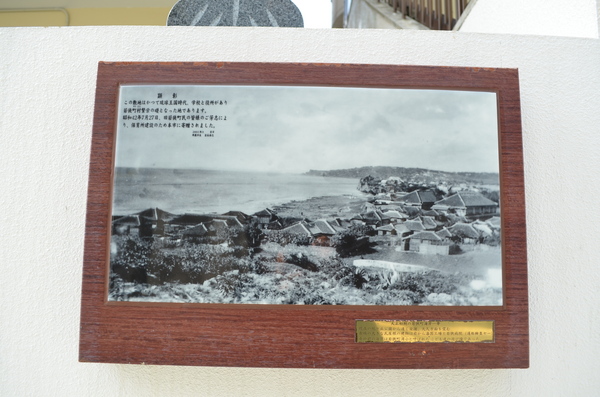Wakasa town-village school remains
History





Remains of the Ryukyu Royal Government’s public office and school. The place was used for negotiations and treaty conclusions with foreign governments.
Basic information
- Address
- 900-0031 1-30 Matsuyama Naha Okinawa
- Business hours
- Nothing in particular
- Close day
- Nothing in particular
- Charge
- Free
- Parking
- None
- Access information
- A 10-minute walk from the Yui Rail Kencho-mae station, or a 2-minute walk from the Kume Yubinkyoku-mae bus stop.
Additional Information
- Academic information
- Here are the Remains of Wakasamachi-mura village school and public office in the Ryukyu Royal government era. The foundation year is unknown, but it is estimated to have been around 1830-40. The village school was for noble families' children, from elementary level to intermediate level; these village schools were built in each village and in Naha and Shuri. There were fourteen schools in Shuri, six schools in Naha, and one school in Tomari; making a total 21 schools. The noble families' children entered the school when they were 7 - 8 years old and studied until they turned 14 - 15 years old. The subjects studied were reading and writing in Sanji-kyou, Nijushi-kou, Shougaku, and Shisho. Those subjects were from China and specialized for young students. When the clan system was abolished, one teacher (called Koudan-shishou) and 82 students were left in the school. Each village school worked as a quasi-public office. There was one Nakadori (manager) and two hissha (historians). When foreign ships visited the Ryukyuan Royal Government, Tomari village school and Wakasamachi village worked as the Tomari government office, and the Naha government office then corresponded with foreign visitors. Especially, the Naha government office (Wakasamachi village school) was used as the place for Perry and the Royal government's negotiation at the time of the RyuBei (Ryukyu-America) treaty, Ryubutsu (Ryukyu-France) treaty, and Ryuran (Ryukyu-Holland) treaty were concluded. By the way, the Ebisudo, enshrined at the site, was moved from the area during the postwar land re-allotment.
- Quote
- Naha City Museum of History
